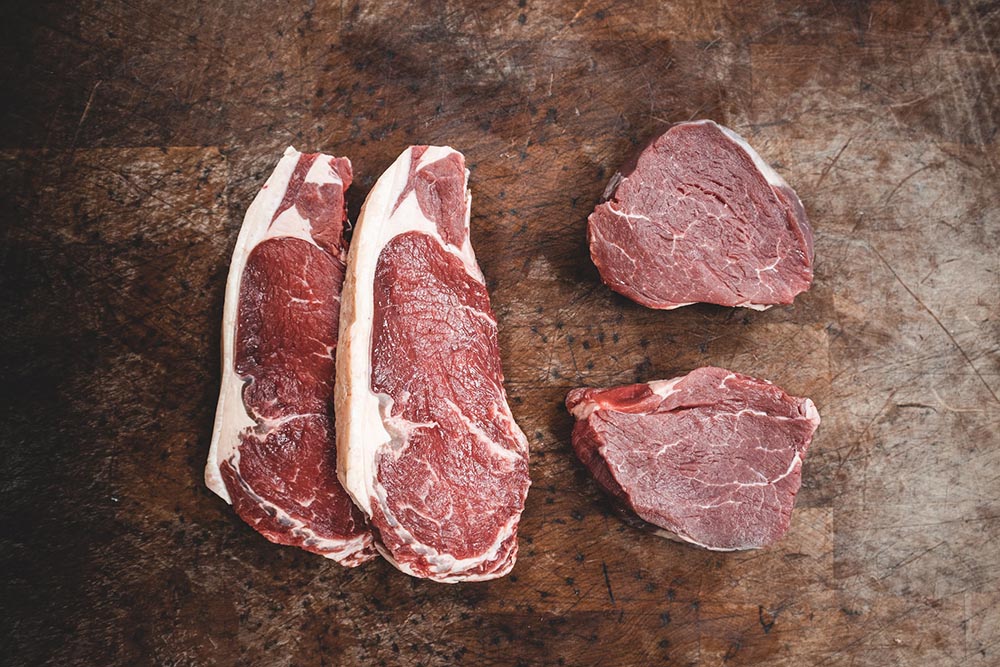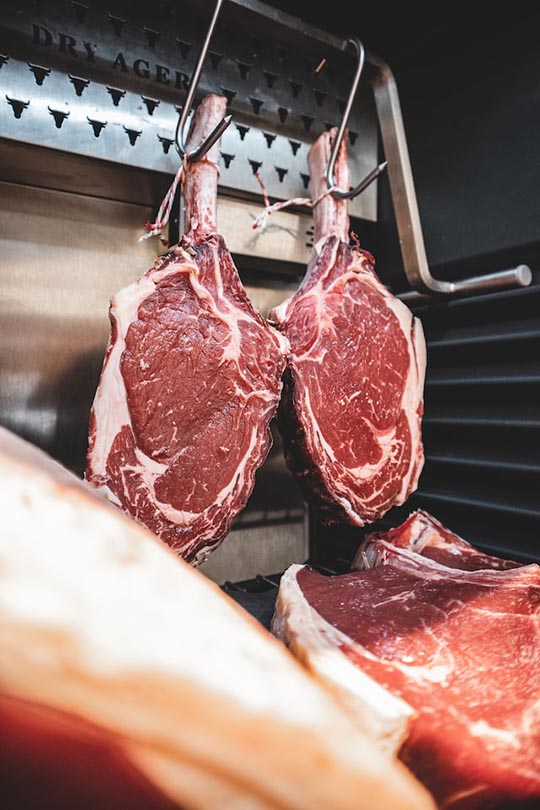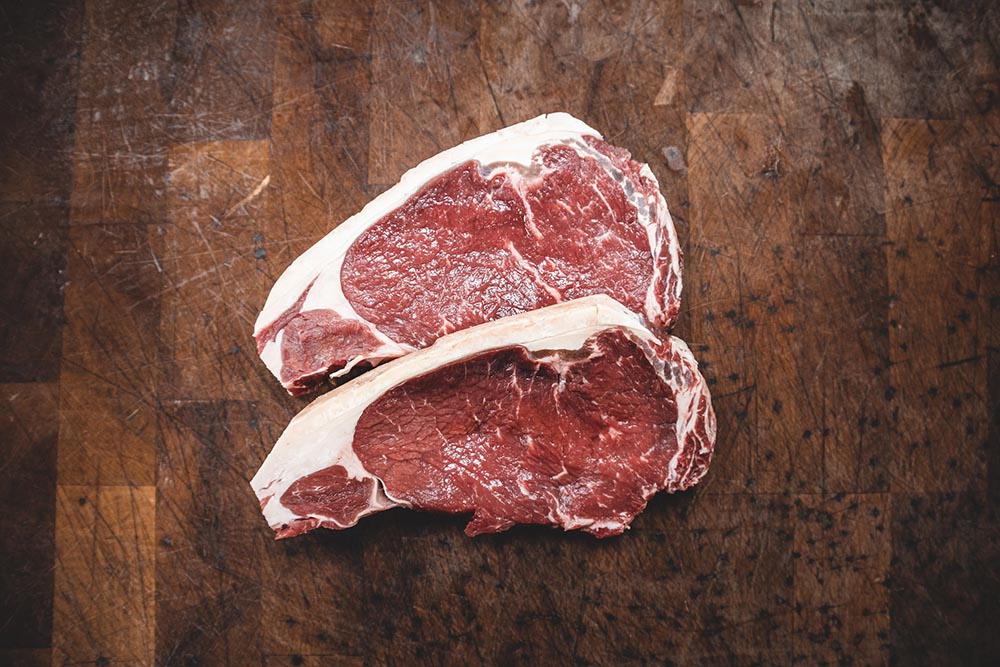How Much Water Does It Take to Produce a Pound of Beef? Facts & Info
-
Pete Ortiz
- Last updated:

It is easy to blow through a pound of beef without a second thought, but hearing the amount of water that went into it is enough to make you choke on your burger.
It takes 1,800–2,000 gallons of water to produce every pound of beef that we eat. That’s enough water to fill a 10×10 pool, take over 100 showers, or wash 50 cars. It only takes the average family a few minutes to eat a pound of beef, but it would take almost an entire week to use the amount of water that went into creating it.
The numbers are eye-opening but also offer a glimpse of promise for individuals trying to make a difference. It is hard to imagine that one person can make an impact, so it’s easy to excuse yourself from making positive change, especially when it’s inconvenient.
But cutting out beef is one area that can benefit your health and the environment. The average American consumes nearly 55 pounds of it each year, so taking it out of your diet could potentially save roughly 100,000 gallons of water annually!
That isn’t said to make you feel bad about enjoying beef. Objectively speaking, beef is delicious, and if you’re concerned about the footprint, there are plenty of sustainable and healthier methods for reducing the amount of water you use.
Still, becoming responsible with water starts with perspective. To help you understand how much water goes into our everyday lives, we’ll explore how much water it takes to produce a single pound of beef.
What Is Beef’s Water Footprint?
It takes, on average, 1,800 gallons of water to produce 1 pound of beef. Beef cattle live roughly two years before being slaughtered, and during that time, they consume thousands of pounds of grass, soy, corn, and other grains. To grow these crops, farmers need to use tons of water!
Cattle’s relatively long lifespan and individual resource demands help explain why beef’s water footprint is so high. In comparison, 1 pound of pork only requires 717 gallons of water, and a pound of chicken only demands 528 gallons. Both animals are smaller than beef cattle and are usually only raised for a few months before being slaughtered.
Of course, the vegetables and fruits that go into feeding livestock carry the lowest water cost. A pound of fruit uses 115 gallons of water, while one pound of vegetables needs a mere 39 gallons of water.

Beef’s Feed Conversion Ratio
Their large bodies mean beef cattle aren’t the most efficient livestock from a feed perspective. They have more bone and other inedible mass that take up resources. As a result, beef has a relatively poor feed conversion ratio (FCR), a useful measure for understanding beef’s footprint.
FCR calculates the total weight of dry feed to the live weight it produces. Beef has an FCR of 6:1. If you add moisture into the weight, the ratio becomes much worse. Chicken and pork production, by contrast, have FCRs of 2:1 and 3.5:1, respectively, and both have seen industrial improvements that have reduced those numbers over the years, unlike beef.
Industrial vs. Pasture-Raised Beef
Not all water sources are as impactful on environmental considerations as others. Although beef cattle require vast stretches of land, causing substantial deforestation in many areas, the natural water sources that feed grazing pastures are less controversial than those that supply industrial feedlots.
- Green water: Rainwater required for crops that beef cattle eat
- Blue water: Irrigated surface water and groundwater needed for crops
- Gray water: Fresh water needed to dilute wastewater to maintain an allowable regulated water quality

Water scarcity is a growing global concern. Because blue and gray water systems remove water from the natural cycle, reducing their usage is an essential environmental effort for many conservationists.
The vast majority of beef production utilizes green water, which accounts for 94% of all water usage. That’s surprisingly impressive compared to pork (73%) and poultry (79%). Given the enormous water demands and the relative size of the beef industry, beef’s blue and gray water needs by volume are still much higher.
Pasture-raised beef solves this issue to a certain extent because cattle aren’t sent to feedlots to live out their final months.
It’s true that industrial-raised cattle, which account for roughly 80% of the industry, grow faster than pasture-raised cattle and use fewer overall resources. But during the 4–6 months in the feedlot, these cattle feed on farmed grains that primarily rely on irrigated water. In many places, feed comes from farmlands that already experience water-stressed conditions.
Related read:
Conclusion
Knowing how much water it takes to produce a pound of beef, you still don’t have to feel bad about eating it. After all, beef isn’t the largest consumer of water, nor is it the ultimate issue surrounding water conservation.
In the end, the greatest water footprint belongs to you. That pound of beef your family ate for dinner only represents a few of the thousands of gallons individuals consume every day.
If you can’t stand the thought of cutting beef out of your diet, there are hundreds of ways to reduce your water footprint. Water conservation is everyone’s responsibility, and fortunately, everyone has a chance to make an impact without much effort.
Featured Image Credit: Kyle Mackie, Unsplash
Contents



